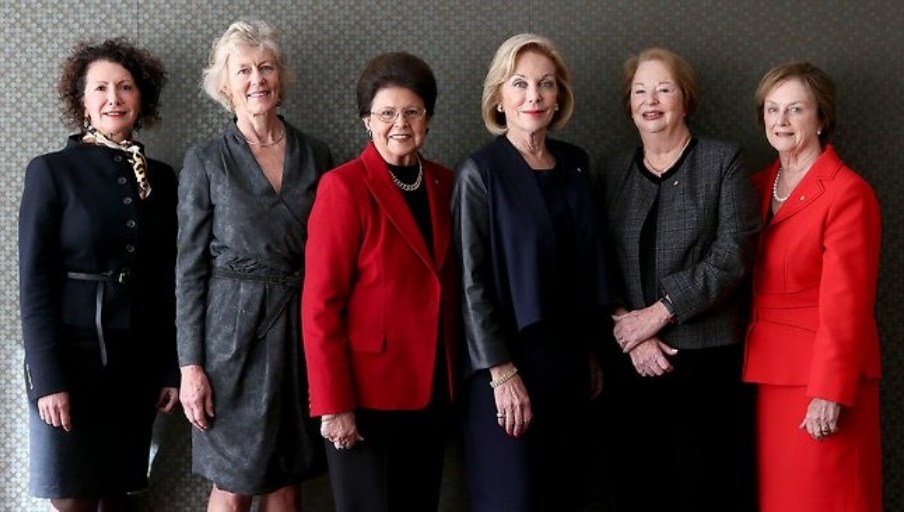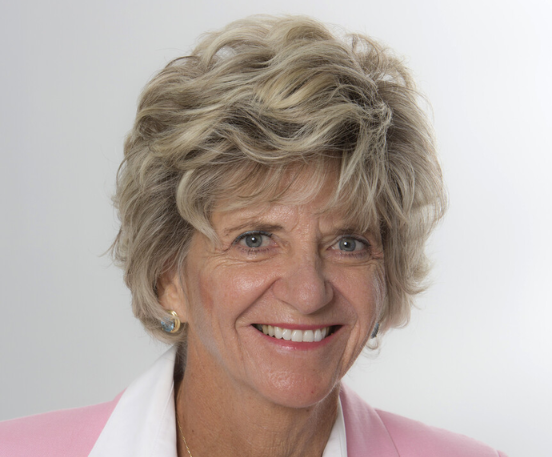Our History
Our mission is women leaders empowering all women

Former CEW Presidents (from left): Christine Christian AO, Jillian Broadbent AO, Imelda Roche AO, Ita Buttrose AC OBE, Barbara Cail AO and Wendy McCarthy AO. Photograph by James Croucher/The Australian
Chief Executive Women had its foundations in 1985 as a branch of the Paris-based organisation, Women Chiefs of Enterprise.
A mutual passion to get a fairer deal for women leaders underpinned the formation of the group. CEW also provided a haven or respite for women seeking to share their experiences as pioneers in the boardrooms and C-suites of Australia.
Barbara Cail AO, the founding President of CEW, says: ‘We grew from the delight of having a peer group.’
It began with the international Women Chiefs of Enterprise approaching Barbara Cail AO, then the publisher of Portfolio magazine, to set up a NSW Branch. ‘I used a very idiosyncratic process. I selected a group of 18 women, organised a dinner and proposed we set up a women’s group.
As well as the objectives of the Paris organisation, which was mainly a supportive international business network of women entrepreneurs, I suggested we create awareness of women’s business capabilities, which up until that point largely remained under the radar. I suggested lunches with male captains of industry and that we also provide pathways for young women by funding leadership scholarships.
It was important that the organisation would also cosset our own needs as women leaders, for fraternity
Barbara Cail AO.
Barbara Cail AO recalls: “By 1991, our group had become a rich environment of learning and energy. The desire for expansion to drive an agenda for women leaders was in abundance. CEW was and still is an exclusive organisation by choice, whose criteria is to ensure that members are prepared to contribute to the overall advancement of women leaders.”
During its first decade of operation, one of the first CEW initiatives was to provide an annual scholarship to aspiring women leaders. Many of these scholarships were focused on equipping women with one of the most valued qualifications in the business world, an MBA.
Wendy McCarthy AO, another founding member, describes the original annual scholarship as “about being something they dreamt about but didn’t think they could ever be.”

Bonnie Boezeman AO
Founding Member
The women who started the organisation were pioneers. They had to work hard to develop something, to help Australia accept the fact that women can run a company, have a family and continue to run a business or become a professional board director.
CEW’s scholarship has been a very unifying act for the whole group. There is now a good alumni group of the women who are connected through the opportunities that CEW gave them and I hope the cascading effect of that is that in their lives they’ll reach out for other women and help them
Wendy McCarthy AO.
During the 1980s and 1990s CEW held a series of boardroom lunches which hosted captains of industry such a Bob Joss as guest speakers. These events were instrumental in CEW gaining prominence as a group of powerful women leaders.
Members of CEW are regarded as serious contenders in the business community
founding member, the late Carla Zampatti AC.
As the number of women in leadership positions grew, so too did the influence of CEW. In the mid-1990s CEW made a submission to the Karpin Inquiry (Industry Taskforce on Leadership and Management Skills, Enterprising Nation: Renewing Australia’s Managers to Meet the Challenge of the Asia-Pacific Century, Canberra: AGPS, 1995) on women and diversity in management and leadership in the 21st century.
This work was reflected in subsequent government policy statements, and taken up in teaching materials in university business schools
Narelle Kennedy AM
Membership of CEW now stands at over 1000. The legacy of the founding member’s vision continues through the powerful CEW Scholarships Program and CEW Leaders Program and a greater external focus, to reflect the fact that advocacy for gender balance and greater participation of women at all levels is still much needed in Australia today.
